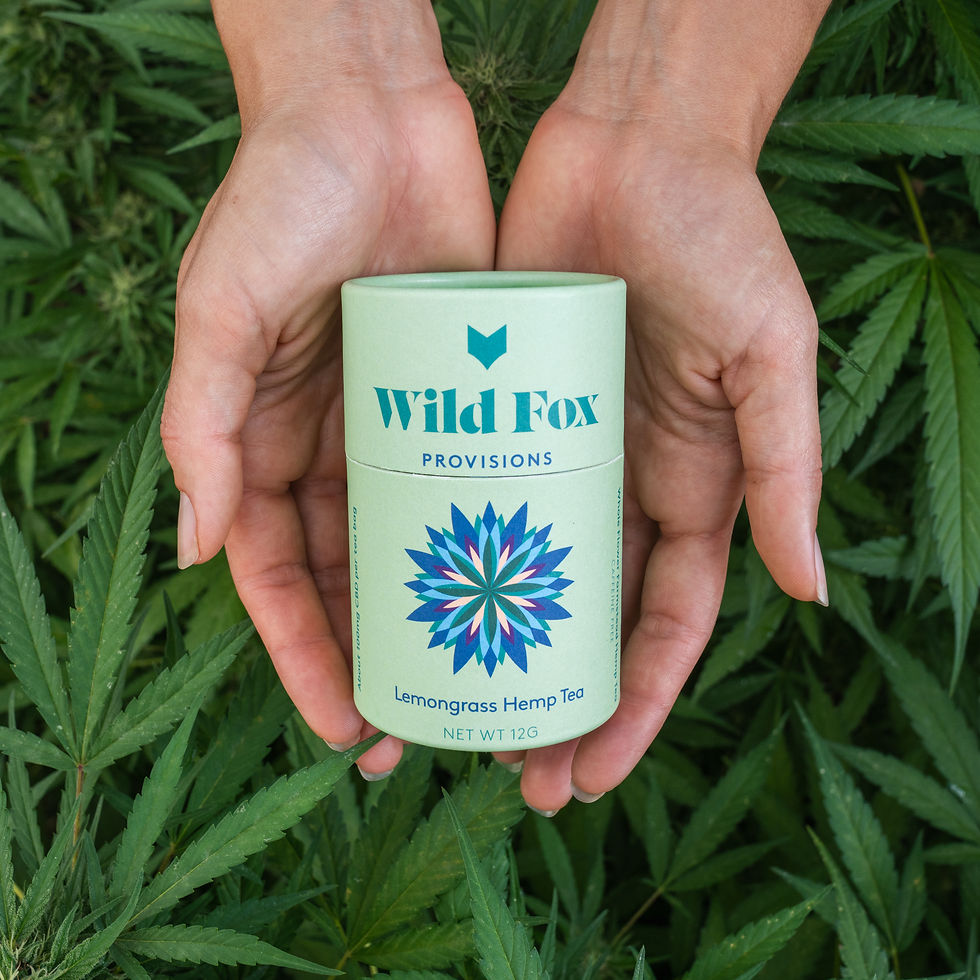Understanding Cannabinoid Hyperemesis Syndrome and Safer Alternatives to High THC Products
- Wild Fox Provisions

- 1 day ago
- 3 min read
Cannabis use has become widespread, with many people turning to it for relaxation, pain relief, or recreational enjoyment. Yet, a lesser-known condition linked to frequent cannabis use is gaining attention and concern: Cannabinoid Hyperemesis Syndrome (CHS). This syndrome causes severe nausea and vomiting, often leading to repeated hospital visits. Recent articles from The Free Press and The New York Times shed light on this troubling condition and its connection to high THC cannabis products. This post explores a few key points from these articles and offers safer alternatives for those seeking the benefits that the cannabis plant has to offer, without the risks associated with high THC consumption.
What is Cannabinoid Hyperemesis Syndrome?
CHS is a condition characterized by cyclical episodes of intense nausea, vomiting, and abdominal pain in people who use cannabis regularly, especially products with high levels of THC (tetrahydrocannabinol). The paradox is that while cannabis is often used to relieve nausea, in some cases, it can cause this severe reaction.
The symptoms typically develop after prolonged and heavy cannabis use. Patients can find temporary relief by taking hot showers or baths, but some cases have led to hospitalization and continued issues even after they have stopped using cannabis products. The exact cause is not fully understood, but experts believe that chronic exposure to THC disrupts the body's endocannabinoid system, which regulates nausea and digestion.
Why High THC Products Are a Concern
The articles highlight that the rise in CHS cases correlates with the increasing potency of cannabis products. Over the past few decades, THC levels in cannabis have surged, sometimes exceeding 30%, compared to much lower levels in the past. The shift from the traditional method of consuming cannabis through smoking, to products like vapes and high dose edibles, has facilitated wider availability and convenience. The combination of these factors means users are more easily consuming stronger doses which may overwhelm the body's natural systems.
High THC products can lead to more intense psychoactive effects and increase the risk of adverse reactions, including CHS. The articles point out that many users are unaware of the risks and may continue using cannabis despite symptoms, worsening their condition.
The hemp industry has also contributed its own complications to this trend. Many companies in the hemp industry have chosen to take advantage of a federal legislative loop-hole and produce unregulated products containing high levels of THC variants like Delta-8 THC, Delta-10 THC, THC-0, and HHC. These chemicals are not technically regulated by any federal laws and ingenious chemists have found ways to turn CBD extract in to these psychoactive compounds. Even more caution should be exersised in purchasing and consuming these products which are often labeled as "hemp" but have been created in a lab.

Safer Alternatives to High THC Cannabis Products
For those who use cannabis for therapeutic or recreational purposes but want to avoid the risks of CHS, there are safer options. Hemp products are required by federal law to contain below 0.3% total Delta-9 THC. Consequently these products can offer alternatives that focus on balanced cannabinoid profiles and lower THC content, reducing the likelihood of adverse effects.
Balanced Cannabinoid Formulations
Instead of high THC products, formulations that include CBD (cannabidiol) alongside THC can provide benefits without intense psychoactive effects. CBD is non-intoxicating and may actually counteract some negative effects of THC, including anxiety and nausea.
Low THC, High CBD Products
Hemp or CBD products with low to no THC and higher CBD levels are less likely to trigger CHS. These options can still offer relief for pain, inflammation, and anxiety but with a gentler impact on the body’s systems.
Non-Smokable Options
Edibles, tinctures, and topicals provide alternatives to smoking or vaping, which can sometimes exacerbate symptoms. These methods allow for controlled dosing and longer-lasting effects without the respiratory risks.

Practical Tips for Safer Use
Consider consulting healthcare professionals knowledgeable about cannabis for guidance
Start with low doses, especially if trying a new product
Choose products with clear cannabinoid ratios and/or lab testing
Avoid daily heavy use of high THC products
Monitor your body’s reactions and seek help if symptoms like nausea or vomiting appear
Avoid products marketing themselves as "hemp" that contain high levels of THC or THC variants.
Final Thoughts
As we all continue down the path of exploring hemp and cannabis products, there are going to be challenges to face and learn from. Cannabinoid Hyperemesis Syndrome is a serious condition that is becoming more common with the frequent use of high THC cannabis products. Awareness of CHS and its symptoms can help users make informed decisions about their cannabis consumption. Choosing products with balanced cannabinoid profiles, lower THC levels, and alternative delivery methods can reduce risks and provide safer ways to address issues like pain, anxiety, sleep and more.
We invite you to learn more and explore product options on our website: www.wildfoxprovisions.com



